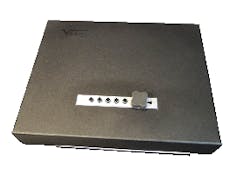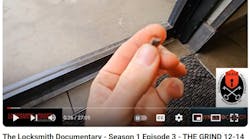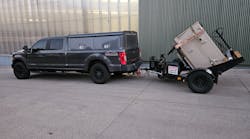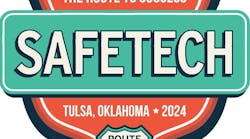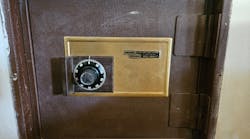A gun safe has an interior that holds at least one long gun, which can be a rifle, shot gun, carbine, musket, etc. The length of a long gun is usually determined by the barrel, not the overall length of the weapon. The National Firearms Act sets a minimum length of 16 inches for a rifle barrel and 18 inches for a shotgun barrel. Most gun safes have an interior height of at least 53 inches. Size and construction varies by model and manufacturer.
This means that any safe with the interior set up to accommodate at least one long gun, is considered a gun safe. The remainder of the interior can be shelves, drawers and cabinets. If you remove the accommodation, it becomes just a safe.
Gun safes have probably become the most popular safe for people who do and do not own guns. During this holiday season, just about every big box store and discount house has special pricing for at least one gun safe.
There are several reasons for the popularity of gun safes. Aside from the obvious, gun safes are less expensive than comparable home safes. One reason is the large number of gun safes manufactured brings down the price. Another reason is aggressive pricing and selling by safe manufacturers and dealers.
Take two comparable safes, one home safe and one gun safe. For the about the same amount of money, a person can buy a 60 by 25 by 25-inch gun safe or a 30 by 18 by 18-inch home safe with similar fire and burglary ratings.
Gun safe manufacturers are becoming more attuned to a wider segment of the population. The range of gun safe's standard colors is expanding to incorporate pink and pastel colors to be compatible with personal tastes. Gun manufacturers also offer the pink option for their handguns and rifles.
Rating Options
Let's take a closer look at gun safes and their rating options, which is either no rating or an UL Listing for Residential Security Container (RSC).
No rating for some people is not a problem as they are either unaware of what a UL label indicates, do not care or do not live in a state that requires a rating or certification for a gun safe. Some insurance companies offer protection if the safe meets minimum requirements for the type and amount of content.
NOTE: California gun safes sellers not having at least a Department of Justice (DOJ) certification for their gun safes can incur fines for each safe sold in the state.
Underwriter's Laboratories has specific criterion for the materials used in a safe and they have determined the amount of time that specific tools must not be able to breach the safe. The UL burglary safe ;isting is the RSC.
Insurance companies rate safes according to the thickness of the steel in the door and the body. Iinsurance ratings are B, C, E, F, etc. The Burglary Classification RSC describes a 1 million theoretical combination lock with relock equipped safe designed to offer protection against entry by common mechanical tools. A UL RSC Listed safe is automatically at least a "B" rate safe.
The UL Residential Security Container listing is based on professional "safecrackers" (UL technicians) attempting to gain entry into the safe. Prior to the attack, they have blueprints of the safe and working knowledge of the lock mechanism and boltwork. They use specific tools to attack the container. They have five minutes to defeat the safe with each tool in a specific location. The same tool can be used over again in a different attack. If UL cannot breach the security of the safe within the total time period, that brand and models of safes will receive UL's certification.
In California, the DOJ developed a certification label for FSD (Firearm Safety Devices) that includes gun safes and similar. The idea for the law, which took effect Jan. 1, 2003, was to protect children by keeping weapons out of their hands. Over the years, the test has evolved. Unfortunately, the DOJ label has become an issue because of the minimal requirements that do not stop an adult from being able to open a safe with little effort and without having prior knowledge of the combination.
If you sell a cabinet, gun cabinet, lock box, gun safe, long gun safe or wall safe in California, it must have either a CDOJ certification which can be found on the Department of Justice Web Site, a label on the container or a UL RSC Listing. DOJ approval enables safe manufacturers whose products do not meet the UL RSC Listing requirements to sell their safes in California as long as they meet or test for the CDOJ certification.
On the positive side, most gun safes have a fire rating from 20 minutes to more than two hours. Gun safe manufacturers can use a variety of testing agencies including self testing. As a result, not all fire tests are the same for temperature, etc. Before recommending a gun safe for a customer who wants a fire rated container, research the manufacturers' specifications to be certain they meet their needs.
Gun safes are available in just about every possible size, shape, construction and rating options. For many safe owners, the gun safe provides the best of both worlds, space for valuables including guns, weapons and ammunition.
Important Considerations
1. Know the safes you sell. Have your employees know the safes you sell. The best way to lose a customer is to not be an expert on each and every safe you sell. Attach a card to each safe that lists the manufacturer, model, weight, dimensions, ratings, price retail and purchase. On the back of the card, post any additional important information the customer would want to know. It is better to sell fewer safe models than lose customers.
2. Asking a customer the value of property being placed in the safe can be difficult. Realize that you will know the combination of the safe being sold, probably installing it and teaching them how to operate the combination lock may make the owner uncomfortable. However, the value placed in the safe will determine what safe rating is appropriate, since insurance companies set values depending upon the safe rating. If the customer becomes hesitant, about discussing the value, explain safe ratings and use round numbers for dollar amounts.
3. When selling a gun safe with a fingerprint reader, help the customer enter the same fingerprint several times. They should hold the finger flat against the reader, with the finger slightly tilted to the left and to the right, and with the finger high and low on the reader. During an emergency, a person may not place their finger in the "bullseye." Having different print positions will ensure the safe lock will unlock on the first try. Some gun containers can hold more than 100 fingerprints.
4. Stock examples of the safes. This can include one or two different sized safes for a particular manufacturer's product line.
5. Use your locksmith distributor to maintain your inventory. Find out if there is a freight charge that differs, depending upon the location of the safe manufacturer. If not, you have many more choices of safe manufacturers. If there is a difference, use safe manufacturers that are geographically desirable.
6. Sell only safes that you are able to deliver. If needed, arrange delivery with a dependable safe mover before you need one. If you sell a safe that requires a third party to deliver, you have no control over how they perform with handling the safe and the customer.
7. Knowing your costs going in will help you sell better going out.
